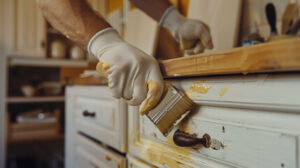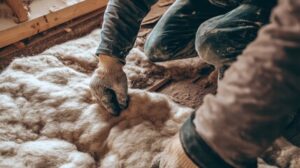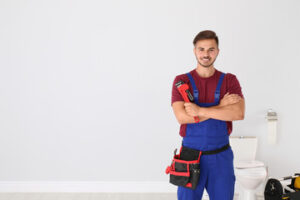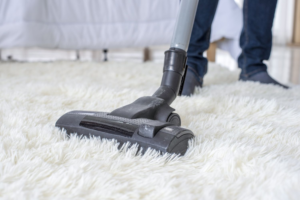Cabinet Refacing Sacramento CA is a cost-effective way to give your kitchen a facelift. It involves upgrading all of the finished surfaces on existing cabinets without changing the layout.

Unlike refinishing, cabinet refacing keeps the cabinet boxes in place and can be done without disrupting your daily life. However, it may mask structural issues or lower-quality materials.
Cabinet refacing is more affordable than replacing the entire cabinet box, which makes it an ideal option for homeowners who want to update their kitchen without spending a lot of money. It also takes less time to complete, which means that you can enjoy your new kitchen sooner. However, it is important to remember that refacing isn’t as durable as a full replacement, and the quality of the work will depend on how well it was done.
Refacing is also a greener option than replacing your cabinets, as it utilizes existing materials and minimizes waste. Moreover, it reduces the number of trees that need to be cut down for new construction material. In addition, refacing is much faster than a complete replacement and requires fewer tools.
The only drawback of this method is that it may limit your design options, especially if you prefer unique door styles. It also doesn’t address any potential issues with the layout or functionality of your cabinets, such as outdated electrical wiring and plumbing pipes. This can lead to costly repairs and potentially dangerous situations.
Another concern with refacing is that it can be difficult to find high-quality veneer that can resist moisture and extreme temperature changes. In addition, the wood veneer that is used for the gable ends and cabinet boxes can warp over time. This can lead to cracks or splits in the cabinets.
A cabinet refacing project can be completed in a day or two, which is much quicker than a full replacement. It can also save you money on energy costs and allow you to save your old cabinets for a future remodel project. Moreover, it can add value to your home, and increase the sale price if you decide to sell in the future.
However, this process is not suited for every kitchen remodeling project. For example, it is not a good idea if you want to change the overall layout of your kitchen or if you need to upgrade your appliances. In addition, refacing isn’t suitable for older cabinets that have been damaged or are made of low-quality materials.
Appearance
Cabinet refacing is less labor-intensive than kitchen cabinet painting, as the existing cabinet boxes and frames remain intact. However, it still involves extensive preparation and sanding to ensure proper adhesion and a smooth finish.
Refacing cabinets is a cosmetic upgrade and won’t address the fundamental layout or functionality of your kitchen. If your current cabinetry lacks a strong work triangle or is in need of improved accessibility features, such as pull-out drawers for appliances or designated pantry space, it won’t be possible to address these issues with refacing alone.
Another downside of refacing is that wood veneer can deteriorate over time, especially in homes with higher humidity levels. This can cause the underlying surfaces of your cabinets to become exposed and create a patchwork of different yellow shades. This is a common problem with natural maple cabinets, which can turn yellow at different rates.
Durability
Cabinet refacing offers durability, but the exact lifespan of your new cabinets depends on a variety of factors. The quality of materials and installation is key, as well as daily use and environmental conditions. With proper care and maintenance, refacing can last 10-20 years or more. However, poor installation and low-quality materials can shorten the life of your cabinets significantly.
Cabinets made with solid wood and MDF stand up to wear and tear better than laminates, which are commonly used for gable ends and cabinet boxes. Laminates are cheaper, but they do not withstand moisture and everyday use like real wood. They also begin to show signs of wear and tear very quickly, while solid wood can withstand years of normal use without any noticeable damage or deterioration.
Another factor affecting longevity is the type of work done during the refacing process. Refacing companies that cut corners to save money by skimping on professional experience may not produce a long-lasting result. Unskilled contractors may also use subpar adhesives or rushed installations, which can cause issues such as misaligned doors and visible gaps in the surface finish.
A simple way to extend the lifespan of your cabinet refacing is to be gentle when using it. Slamming drawers and doors can put a strain on the material and may lead to cracks and chips. It is also important to avoid harsh cleaners, as many of these contain chemicals that can damage your cabinet wood in the long term.
The final deciding factor in the longevity of your cabinet refacing is how much it matches your lifestyle and kitchen goals. If you want to change your kitchen layout or make significant improvements in functionality, refacing is not the right option. However, if you’re looking for a cost-effective way to give your cabinets a facelift with modern materials and features, refacing is an excellent choice. It is also quicker and less disruptive than replacing the existing cabinetry.
Maintenance
Cabinet refacing is an effective way to update a kitchen’s aesthetic without spending a lot of money. However, it is important to remember that the quality of the finished product depends on proper maintenance and regular inspections. By following these tips, homeowners can ensure their cabinets last longer and look great.
First, homeowners should hire a reputable and experienced company to perform the work. Checking online reviews and requesting recommendations from friends and family can help them find the right contractor for their project. In addition, homeowners should always check the contractor’s licenses and insurance to ensure they are legitimate.
Once the refacing is completed, homeowners should clean their cabinets regularly to remove dirt and dust. Using a gentle detergent and a soft cloth is recommended, as harsh chemicals can damage the finish. It is also important to monitor the kitchen’s humidity levels, as excessive moisture can cause wood to warp or expand. Homeowners should also avoid slamming cabinet doors, as this can cause damage to the painted surface. Instead, it is a good idea to use small bumpers or soft-close hardware to prevent the door from slamming shut and causing scratches and dents.
It is also helpful to keep a small amount of touch-up paint handy in case minor scratches and dings occur. Addressing these issues promptly can prevent them from causing further damage and can help prolong the life of the refacing. Finally, homeowners should regularly inspect the hardware on their cabinets and tighten any loose screws or hinges.
Unlike a full kitchen remodel, cabinet refacing is a less invasive process that doesn’t require the removal of the existing cabinets or appliances. This can save homeowners time and money, and it also minimizes disruption in their homes. In most cases, a cabinet refacing project can be completed in 3-5 days, and the kitchen will remain fully functional during this time.
Although refacing is a less invasive project than a complete kitchen remodel, it is still a big construction job that can cause a mess and disrupt the daily routines of the home. It is important to clear out the space and prepare the area for refacing by moving appliances, removing any excess clutter from countertops, and covering floors and surfaces with drop cloths or protective sheets. Homeowners should also create a workspace for the refacing professionals and make sure that the area is safe and secure. It is also a good idea to inform family members of the project timeline and any potential inconveniences.



